Solar Orbiter flares visible by SDO

Solar Orbiter’s STIX has observed over 1000 flare candidates as of September 2021. Of those, 358 are given locations by the Coarse Flare Locator. Joint visibility with Earth-orbiting SDO can be determined using ephemeris information from Solar Orbiter, contained in the Spice kernels, and the Earth. Code is here.
Displaying SunPy maps with PlotLy
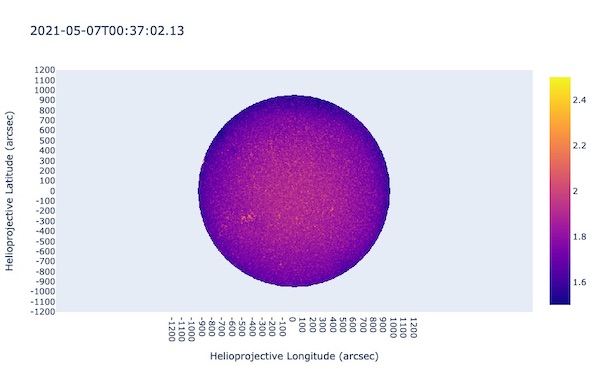
PlotLy lacks matplotlib’s projections function, which allows the user to add custom coordinates to their maps using transforms. In order to use solar maps in PlotLy and Dash, these transforms have to be applied (or faked!) elsewhere.
NuSTAR calibration update spectral fit comparison

Spectral fit
Fit to NuSTAR spectrum with pyXspec example
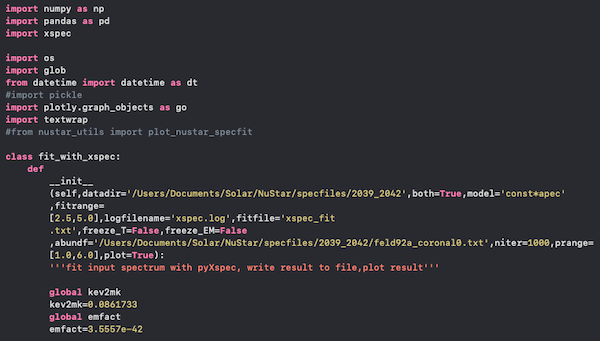
PyXspec is the Python interface to NASA’s X-ray Spectral Fitting Package.
DEMreg solutions - adding one wavelength at a time
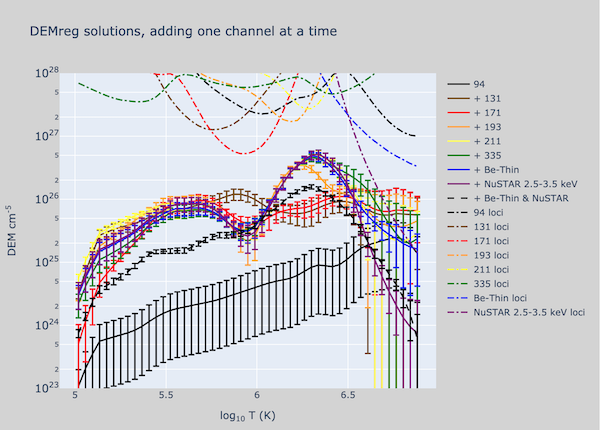
The shape of DEM solutions provided by DEMreg are strongly affected at high energies by the addition of Xray data. For completeness, I added each channel (both EUV and Xray) one at a time to the inputs to see how the solution was affected. The significant results are still what happens when the Xray data is added.
Sensitivity of DEMreg solutions to temperature range

The shape of joint DEM solutions (AIA + Xray) provided by DEMreg are very sensitive to the upper boundary of the selected temperature range.
AIA and NuSTAR loci curves
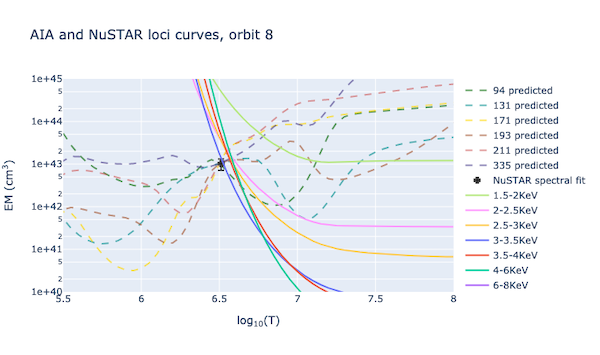
A quick check on appropriateness of spectral fits. Like with AIA, we can plot the NuSTAR loci curves, given here by the rate (counts s-1) divided by the appropriate temperature response (counts s-1 cm3) at a given energy. Select a variety of energies here in order to see which is most influential in contributing to the spectrum.
Calculating Expected AIA flux
To calculate expected flux (per AIA pixel) given a temperature and emission measure ( expected_AIA_flux() in flare_physics_utils.py):
NuSTAR small flare of 12 September 2020 - orbit 6 source 2
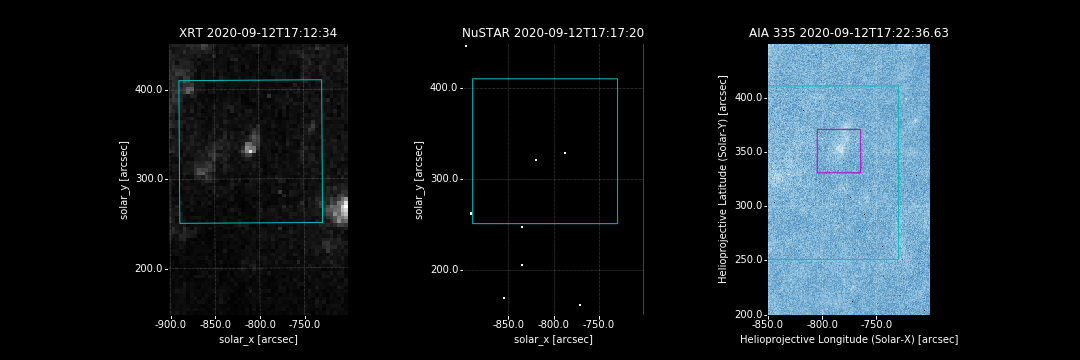
A second, much fainter source also close to the edge of the NuSTAR FOV examined with the initial intent of determining if the brighter source in the orbit left the FOV during the observation, thus accounting for the sudden drop in counts around 17:19.
NuSTAR small flare of 12 September 2020 - orbit 10
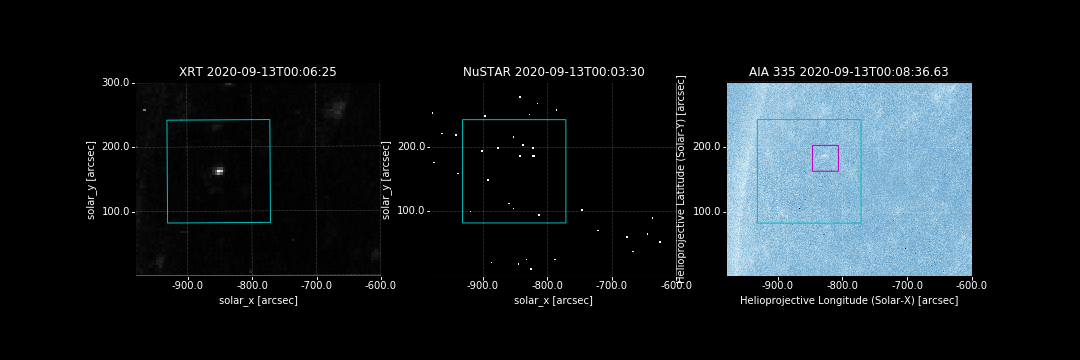
Basic information
NuSTAR small flare of 12 September 2020 - orbit 6
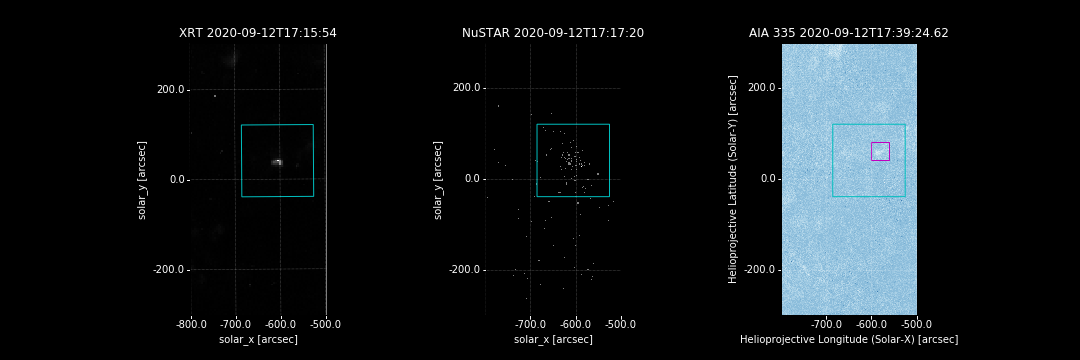
Basic information
NuSTAR small flare of 12 September 2020 - orbit 4
